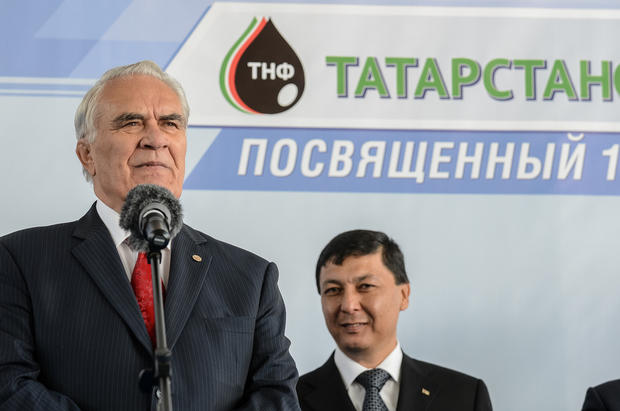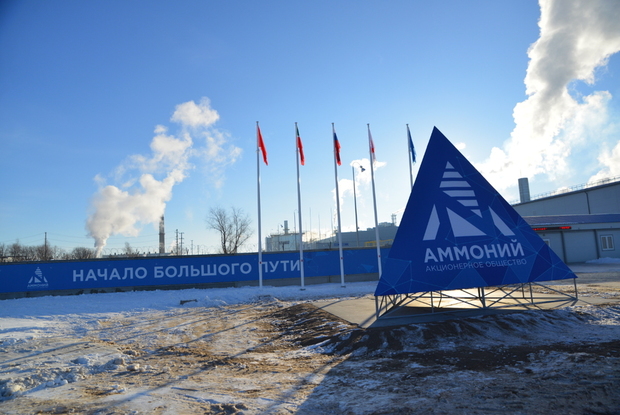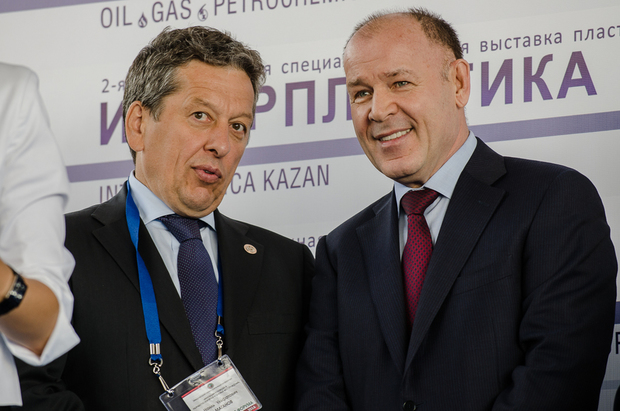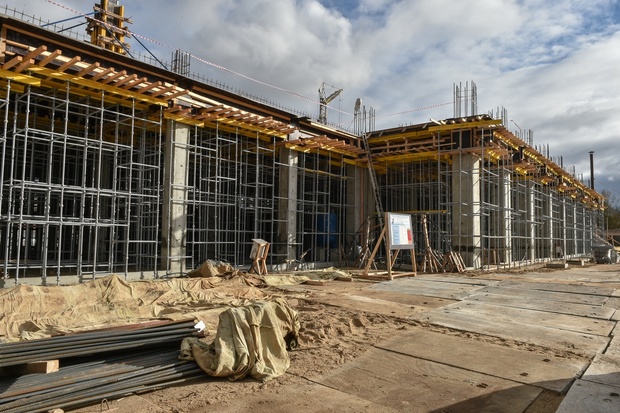Industrial marathon: Tatarstan petrochemical growth rate surpasses nationwide one
The enterprises of the petrochemical sector have provided the regional economy with 70% of the profit
Industrial production in Tatarstan is expected to grow by the results of last year by 3-4% compared to 2015, the growth drivers promise to be Tatneft, Nizhnekamskneftekhim and KAMAZ. In general, the chemical industry in Tatarstan will grow 1,3 times by the results of the year, and the profit of the industry will exceed 320 billion rubles. What factors have contributed to the growth of the indicators and their decline and what are the results of each company of the petrochemical complex in 2016 — in the review of Realnoe Vremya.
Plus 3,4% in favour of industrial production index of Tatarstan
Neither economic downturn, nor sanctions, nor foreign policy difficulties have prevented the Russian petrochemical industry to increase production volumes and even to implement investment projects that relate to the introduction of new technology and construction of industries. Besides, in both domestic and foreign markets, the demand for petrochemical products has showed growth. As for oil and gas, in these segments of the industry, despite all the same reasons, the situation by the end of the year was quite optimistic.
The majority of experts assess the situation on the petrochemical market in 2016 and following years as favourable compared to the period when the prices for energy and raw materials were significantly higher. According to the Federal State Statistics Service, the enterprises of the oil industry in 2015 compared to 2014 increased their production by 1,3%, up to 534 million tonnes. The production increase trend was observed in 2016. According to the Ministry of Energy, the volume of produced oil last year will amount, according to preliminary estimates, to 547,5 million tonnes, 253,5 million of which is export (increase by 2015 — almost by 5%), and natural gas production, from 45,3 to 51,3 billion cubic meters. Oil companies received a significant benefit due to increase in oil prices.
Petrochemical enterprises in Russia in 2015 also increased output by more than 6%. For example, the volume of polypropylene added to the level of 2014 more than 23%, while the production of polyvinyl chloride, 20%. The growth promises to be in 2016 as well, as evidenced by the preliminary results of the industry. Ruble devaluation has played the role in the growth, allowing the companies to increase share of exports. At the same time, a weak ruble displaced risen in price imports on the market, thereby increasing demand for domestic products on domestic market. However, according to analysts, low cost of the ruble this year has reduced its influence.
Meanwhile, according to the president of the Union of oil and gas producers of Russia Gennady Schmal, the petrochemical complex still does not play a significant role in the economic development of the country; its share is only 1,6% of GDP. However, the situation in Tatarstan is quite different, where the petrochemical complex is the driver of the economy: the enterprises of the complex form almost 60% of the sales volume and more than 85% of profits in the economy of the Republic.

It is evidenced by the results of 10 months of 2016: the revenue of the enterprises of the complex exceeded 691 billion rubles, which is higher by 2% than last year. Oil production rose by 4% to 26,2 million tonnes, a 13,3% increase in the production of diesel fuel, petrol production was increased by 8,4%, the production of rubber products though only slightly but increased by 0,2%. In the result, the oil and petrochemicals provided from January to November nearly 70% of the total profits in the economy of the Republic. Coupled with refining, these two sectors have increased the index of industrial production in Tatarstan up to 3,4%, whereas in Russia this figure is only 0,4%. As President of Tatarstan Rustam Minnikhanov noted in his annual address to the State Council, the basis of Tatarstan industry is the petrochemical industry that has been concentrated by Tatneft and TAIF group of companies.
Innokam at 750 billion rubles
One of the main reasons for the growth of the petrochemical industry, according to experts, is the factor of import substitution. High import prices due to weak ruble has contributed to the fact that Russian consumers of petrochemicals are more willing to take domestic counterparts, especially as the Republican petrochemical workers have something to offer in return for foreign product.
In comparison with 2015, industrial production in Tatarstan will grow by 3-4% in 2016, while the growth drivers will be Tatneft, Nizhnekamskneftekhim, KAMAZ. According to the Ministry of Economy of the Republic, chemical industry will grow by 1,3 times, and the profit of the industry will be more than 320 billion rubles.
To major events in the sector at the level of the Russian Federation can be attributed the government's signing of the plan of realization of the Strategy of development of chemical and petrochemical complex for the period by 2030, which includes technical re-equipment and modernization of existing chemical and petroleum industries. In the oil industry, it is the purchase of the Bashkir oil company by Rosneft. The acquisition of state-owned shares of Bashneft was completed on October 12. The company and the market evaluate the effect of the transaction very high: according to the plans, oil production of the combined company is to increase by 10%, and its processing, by 20%.
As for Tatarstan, the event of the year can rightly be the signing in June by Prime Minister of Russia Dmitry Medvedev the order to create Innokam and the road map of Kama innovative cluster. Within the scope of this project worth 750 billion rubles, Tatarstan is planning to implement 79 projects with the support of the federal center by 2020, not only industrial ones but also infrastructure ones. According to the Minister of Economy of Tatarstan Artyom Zdunov, Innokam will allow the integration of sectors of the economy and key industries forming GRP. Besides, during the year, the industry has acquired new production capacity: among the largest ones is the official launch of the plant Ammonia, the launch of the plant for the production of alpha-olefins at Nizhnekamskneftekhim after a large-scale modernization and the new delayed coking plant at JSC TANECO, as well as the creation of several new companies in the SEZ Alabuga and the technopolis Khimgrad.

The growth of production and new investment portfolio
As for Tatneft, it has increased the volume of production: over 11 months of 2016 it produced over 26 million tonnes of oil. The company offset the decline in quotations of ''black gold'', increasing the production volumes by almost 5% and reducing the cost. The revenue of the oil company for 9 months decreased by only 19 million to 349 billion rubles. But due to the rapid cost reduction of its gross profit increased by 1,23 billion rubles, up to 124,68 billion rubles, and the company's profit from sales increased by 1,4%, up to 97,6 billion rubles.
According to the assessment of industry analysts, despite the crisis in the industry and in Russian economy, Tatneft is demonstrating very high efficiency as a producer, as well as an investor. Tatneft is the fifth in the top 10 global oil and gas industry, according to The Boston Consulting Group (BCG), surpassing Lukoil and Novatek.
Besides, this year Tatneft has drawn attention to itself by the purchase of shares of PJSC Nizhnekamskneftekhim. For the first time the company acquired from the state in the face of SINKH 24,9% of the shares of Nizhnekamskneftekhim for 19,87 billion rubles and 9% from its subsidiary, JSC TANECO, in February. In November, FAS (the Federal Antimonopoly Service of Russia) approved the purchase by Tatneft another 1,8% of ordinary shares of Nizhnekamskneftekhim. Thus, the share of Tatneft have rose to 26,8%, which is even slightly more than a blocking stake. As the press service of the company reported after the transaction, Tatneft is planning to increase the shareholder value of Nizhnekamskneftekhim and to support investments in the development of the asset, ''The key task for the company is to ensure profitability of the company, which is achieved including at the expense of investment in development.''
However, already in the second decade of December, Tatneft declared intention to sell its stake (24,99%) of PJSC Nizhnekamskneftekhim to the main shareholder of Nizhnekamsk enterprise, TAIF, for 32 billion rubles. The transaction was closed at the end of the year. Thus, by selling the purchased pack of 24,9% of the shares (402,8 million ordinary shares) of Nizhnekamskneftekhim, the oil company will make a profit at almost 12 billion rubles.
A subsidiary of Tatneft, the oil company TANECO, over the year also showed good results: for 11 months of 2016 the amount of processes hydrocarbons exceeded 8,4 million tonnes, and the production of petroleum products amounted to 8,1 million tonnes. The processing degree of raw hydrocarbons at the plants of the complex is still considered as the highest in Russia, 99,2%.
Another enterprise belonging to Tatneft group of companies, the Nizhnekamsk tyre plant, increased production of truck tires by nearly a quarter (23%), light truck tyres volume gained 36%, the bus ones, by 53% more than over last year's three quarters. However, the production of passenger tires was decreased by 11%, although this type of product in the total volume of tyre had occupied 20%. Nizhnekamskshina stopped supplying passenger car tires to the domestic factories, having moved to the secondary market. As Nail Maganov announced in early November at a meeting of the Board of Directors of Tatneftekhiminvest-holding, ''from the point of view of money, it gave only an increase.''

As for financial performance, along with automotive market, Nizhnekamskshina is going through hard times. High prices for raw materials, rubber, due to low ruble increased the share of raw material in the cost per tyre by almost 55%. Drop in 9 months of production of tires by 6% has reduced income of the bus branch of Tatneft only by 1,4%, to 11 billion rubles. At the same time, the company's profit has fallen 8 times.
New frontiers of petrochemical industry and a streak of bad luck for oil refining
In the chemical and petrochemical industry of Tatarstan the results look convincing: over the first three quarters of 2016, the volume of production in this segment of the Republican industry increased by almost 3%. The leading position by almost all indicators belongs to TAIF group of companies with its structures Nizhnekamskneftehim and Kazanorgsintez. Despite the decline in prices for petrochemical products, the companies have retained the leading position as supplier of polymers.
In 2015, the production of rubbers and plastics, the sale of which brings Nizhnekamskneftekhim the bulk of profit, grew by 2,4% up 1,365 million tonnes. However, over 9 months of 2016, their volumes have already reached 1,05 million tonnes. Sales of products and services for three quarters earned Nizhnekamskneftejhim nearly 126 billion rubles of revenue, the net profit of Nizhnekamskneftekhim PJSC amounted to 21 billion rubles, having increased compared to the same period last year by 12%. In general, the company for the period has increased the production of marketable products by 2,2%.
It seems that the outgoing year will again bring Nizhnekamsk and Kazan record-breaking results for revenue and profit. Experts believe that the profits of both companies is increasing due to favourable conditions in the market of polymers: the price of plastics is high, the export is profitable because of expensive dollar, but imports in the country is decreasing. What is more, the demand for polymers on the Russian exceeds their production by quarter, despite the fact that the Russian petrochemical industry is increasing the production volume of plastics. As for the rubbers, the main volume is exported. As the head of TAIF Albert Shigabutdinov noted in an interview with Vedomosti newspaper, ''there are no problems with rubbers, although world prices for rubbers vary greatly, but we do sell them and we sell through direct contracts with such companies as Bridgestone, Continental, Pirelli, Michelin, Goodyear, Belarusshina, as well as with Russian companies.''
Kazanorgsintez PJSC will also speak about its new financial and production achievements in 2016. From January to September 2016, the company's profit was 17,5bn rubles, which excelled last year's result by 22%. Consequently, the enterprise's revenue increased by 15% to 58bn rubles. Augmentations of plastic production volumes increased the total volume of commodities at KOS by 2,4%. Kazanorgsintez's further plans are connected with a project on increase of ethylene production by 450,000 tonnes, which will allow to multiply volumes of polyethylene and other polymers.

The situation in oil refinery is far complicated. Production of oil goods carried out by two companies in Tatarstan – TAIF-NK and TANECO – reduced by 5,7% from January. It is the only indicator in petrochemistry of the republic that was lower of general results in Russia. Fall of domestic world prices affected the decrease. However, sale incomes of the majority of transnational corporations also reduced. The global tendency for falling prices for chemical and oil refinery products has an impact. For instance, German concern BASF lost ¼ of its revenue, Korean DOW lacked 6% and Dupont – 2%.
Being an independent company that is not part of Vertically Integrated Oil Company, TAIF-NK felt all ''amenities'' of both the big tax manoeuvre and growing excises on oil products against a background of their falling prices first-hand. The dramatic knot started to uncoil last year when a serious slumping fall in oil product rates followed the reduction of world oil rates. In addition, the ruble weakened a lot. All these factors severely hurt the financial indicators having cut TAIF-NK's profit considerably. Paradoxically, it seems that despite the two-fold (!) fall in world rates, prices for oil and gas feedstock in Russia not only decreased but even ramped up. As a result, it led to additional costs equal to 19bn rubles,'' director general of the company Rushan Shamgunov commented to our newspaper in a May interview.
The ''tax manoeuvre'' continued having its negative impact on the enterprise this year as well. First of all, it stimulated oil extracting companies to sell oil for export, which affected the price for feedstock in the domestic market. Considering the price for the currency, oil became quite expensive for independent companies. TAIF-NK doesn't have its own feedstock. It is not part of vertically integrated companies. It is almost the only company that refines purchased oil, so it has to accept prices it is offered. As a result, the growth of costs on feedstock is greater than the growth of revenue from oil product sales. All in all, the enterprise lost a significant part of its profits in 2016 due to these factors. If in 2014 TAIF-NK's sales profit was 11,7bn rubles, in 2015, the above-mentioned factors reduced it to 9bn, and a level of 4,3bn rubles is expected in 2016. Meanwhile, the index of physical volume for 10 months last year grew by 2,6%, and revenue increased by 4bn rubles to 136bn in comparison with 2014. The expected net profit in 2016 will be twelve-fold (!) lower than the two-year-old level.
Sale of straight-run gasoline for needs of neighbouring NKNKH, sale of motor gasoline – the company is still the only producer in Tatarstan – export of diesel fuel bringing the enterprise the major part of its profit nowadays allow the company stay afloat. The launch of the Heavy Residues Deep Conversion Complex will enable TAIF-NK to reach its previous levels. A unique technology will allow the company to completely stop production of heavy oil goods and make only Euro-5 eco standard products, which will make money for the enterprise. So the administration of TAIF and its subsidiary oil refining company are pinning their hopes on 2017 when the complex is put into operation and reaches production capacities.
As for the head company, the administration of multisectoral holding TAIF worked on its perspectives during the year. Numerous meetings and negotiations with worldwide known companies interested in cooperation with the enterprise of the group prove it. For instance, Japanese Mitsui expressed its desire to participate in a project of olefin complex construction and construction of generating 500 MW capacities for it. General Electric, which TAIF already cooperates in some projects with, in turn, offered its services and inventions for NKNKH's ethylene production and Kazanorgsintez's projects. At one of the meetings with German Linde's top managers, which NKNKH and TAIF-NK already cooperate, they talked about a project on isocyanate production at Nizhnekamskneftekhim. Demand for this product in the Russian market is quite high. At the same time, the Russian Federation doesn't have its own isocyanate production. In addition, French Schneider Electric offered TAIF GC to open a joint production in Tatarstan.

An unsecured loan of 50bn rubles for 5 years granted by Otkrytie bank can be called one of the important financial events for TAIF. The company intends to expend the money to realise a development strategy programme, which includes olefin complex construction at NKNKH, modernisation of KOS and energy enterprises of TGC-16 and other significant projects. According to Albert Shigabutdinov, ''considering today's market prices, the programme is estimated at $14,5-15bn, of which 12bn are an industrial construction. The other part will be spent on social and civic construction. Now we are finishing the creation and specifying the development programme of TAIF PJSC from 2025 to 2030''. Another loan given to TAIF at the end of the year by Alfa-bank equal to $230m for five years can also be mentioned here. ''The borrowed funds will be spent to finance the ongoing activity and investments of TAIF Group of Companies,'' says the financial establishment's press release.
Carbamide rates ate Ammonia's profit
Speaking of other companies of the petrochemical complex of Tatarstan, chemical enterprises also have better indicators in production volumes. Ammonia factory in Mendeleyevsk, which was officially launched in February 2016, increased the volume of sold production for the first quarter to 8,3bn rubles and improved last year's indicator two times. However, at the beginning of November, director general of Tatneftekhiminvest-holding Rafinat Yarullin said that Ammonia's profit fell because of reducing carbamide rates. Due to that, profitability of the company's sales was just 0,02%. Nizhnekamsktechuglerod PJSC also felt the change of prices for technical carbon – the enterprise's revenue decreased by almost 20%.
By the way, in the middle of December during Russian President Vladimir Putin's visit to Japan, Ammonia, Mitsubishi Heavy Industries Ltd and Sojitz Corporation signed a memorandum on creation of the second stage of ammonia, methanol and carbamide production complex.
Due to the realisation of investment programmes, Nefis Cosmetics increased its production volumes by 16%. In the sphere of household chemicals, the company set a record having sold 155,000 tonnes of products. The total revenue of the four enterprises of Nefis Group rose by 51% compared with 9 months in 2015 and became almost 39bn rubles.
Chemical Plant named after L.Y. Karpov and Kazan Synthetic Rubber Plant became a fly in the ointment against a background of growing production indicators. The first plant reduced its production volumes by 17% for 9 months. The administration of the company says that the closure of an unprofitable shop of silica gel production was the reason for the fall. Kazan Synthetic Rubber Plant decreased its production volumes by 16% during 6 months because of a lasting overhaul. A summer hack of the plant's accounts can be considered as one of the misfortunes: the plotters managed to steal 8m rubles from Spurt bank and 15bn rubles from AKIBANK.
What is more, in August, Vnesheconombank froze the finance of construction of the methylchlorosilane plant due to a two-fold rise in construction costs. However, it did not impede the Kazan Synthetic Rubber Plant-Silicon from being on Tatarstan's investment memorandum for 2017.

Rubber goods producer Kvart, on the contrary, increased its production and revenue by 2,6% and 19%, respectively. The enterprise's profitability grew, compared with last year, though it has not returned to its previous levels yet.
By the way, small and medium-sized business in petrochemistry also rose. Khimgrad technopolis improved its production from the beginning of the year by 19,2bn rubles, which is 22% more than in the analogous period last year. The multiplication took place because of production of nanotechnological goods whose share in the total volume in comparison with last year grew by almost ¼ to 3,2bn rubles. What is more, the number of residents in Khimgrad also augmented to 268.
From ''negative'' to ''stable''
Despite the stabilisation of currency rates and oil prices, risks of economic perspectives linked, first of all, with external affairs will remain in the new year, analytics think. But the Tatarstan Ministry of Economy's forecasts for 2017 are optimistic. Industrial production index is expected at 105,1%. The growth of today's 103,2% will be guaranteed by the activity of processing factories, mainly chemical and oil refining plants, and their realisation of big investment projects.
Enterprises concentrated in the Kama Industrial Hub, are waiting for an intensive development, firstly, they are TAIF projects. For instance, in 2017, it is planned to reach the installed capacity of TAIF-NK's Heavy Residues Deep Conversion Complex, which, according to calculations, will add 1,7% to the pot of industrial production of Tatarstan. Construction of the first stage of ethylene production with a capacity of 600,000 tonnes and pyrolysis refinery starts at Nizhnekamskneftekhim. The launch of new ELOU-AVT-6 at TANECO will add another 2,5% to the index. In experts' opinion, Russia is expected to have a growth in polyethylene, polystyrene and polypropylene production, which is explained by a high demand for these kinds of plastic. Oil extraction will make its contribution, of course. International ratings agency Fitch changed the forecast for the Russian oil and gas sector for 2017 from ''negative'' to ''stable''.
Alabuga-2 Special Economic Zone is promising to become another growth perspective. It was decided to create it near the Nizhnekamsk Industrial H ub. According to head of Tatarstan Investment Development Agency Talia Minullina, about 3,8m tonnes of oil, 600,000 tonnes of ethylene, 300,000 tonnes of polyethylene, 250,000 tonnes of polypropylene and 200,000 tonnes of polystyrene will be produced annually there. Nizhnekamsknetfekhim's Olefin Complex and TAIF-NK's Heavy Residues Deep Conversion Complex and TANECO are going to be the biggest residents of the second special economic zone in Tatarstan. There will be created about 3,200 working places in new enterprises. By calculations, estimated investments in Alabuga-2 by means of realisation of projects of the biggest residents can total 360bn rubles within five years.